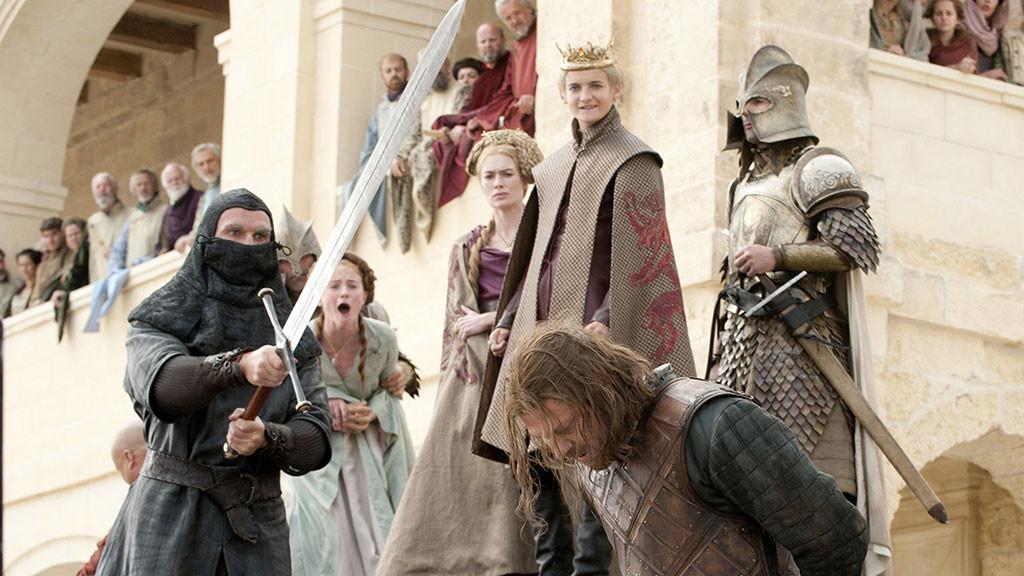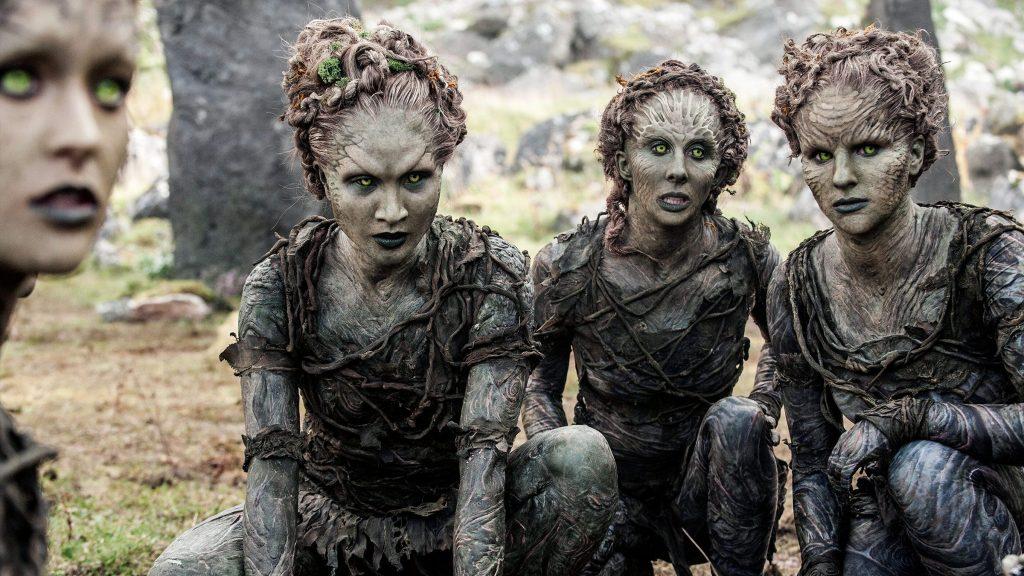It’s easy to sort through “The Door’s” various moments of note – the revelation of Wylis’s transformation into Hodor, the choosing of Euron Greyjoy as the next king of the Iron Islands, Sansa Stark’s confrontation with Lord Petyr Baelish – and pick the dominant thematic motif: (re)birth, particularly considering that Euron has a literal return from death. (A corollary recurring theme: second chances [which, I suppose, is a type of rebirth, as well], as the developments surrounding Arya Stark and Ser Jorah Mormont more than ably point to.)
But the most important thematic footwork in this episode is done on the dancefloor of backstory, not necessarily of character work – and in order to properly analyze, deconstruct, and otherwise appreciate the slick dance moves, we’ll need to change up the format or scope of this column, even if slightly and even if only for this one instance.
There have been few times throughout Game of Thrones’s five-and-a-half-year lifespan that the series drops a megaton bombshell of a revelation, one that makes all of the events before it be thrust into an entirely different light – which is more than likely a byproduct of showrunners Dan Weiss’s and David Benioff’s deliberate decision to strip their adaptation of most of the world-building, histories, and mythologies that George R.R. Martin so adroitly (if not always so successfully) employs in heaping helpings in his massive tomes of novels. (They have, obviously, perfected the bringing of Martin’s game-changing, shocking moments to the small screen, as the death of Lord Eddard Stark or the bloodbath that was the Red Wedding resoundingly attests to.) This makes “The Door’s” surprise reveal of the White Walkers’ origins all the more effective – it is, more likely than not, the single most powerful narrative twist yet.
Here’s how it works thematically: the children of the forest, suddenly finding their home of Westeros being invaded some 12,000 years ago by the savage and unruly First Men (who were able to leave their lovely continent of Essos behind by a naturally-occurring land bridge), decided that the only way for them to win this sudden, unexpected war was to turn the greater size and strength of the humans against themselves – and, indeed, by transforming man into the White Walkers, it would nullify the First Men’s greater technology (leather shields, long lances, the domestication of horses), as well. It was as much of a sure thing as could be possible.
Except, in the joint world of A Song of Ice and Fire and Game of Thrones, things never go according to plan. The Walkers turned out to be uncontrollable – there’s another thematic touchpoint here, perhaps, of how power corrupts all peoples at all levels across all civilizations – and became just as much of a menace against their creators as against their intended victims. Finding themselves overpowered and fending off enemies on two fronts, a peace pact was eventually signed, and the First Men and the children both beat back the supernatural ice zombies and created the Wall in order to ensure their joint future safety.
(It should be noted that there is another possible explanation for the creation of the White Walkers: our current understanding of the novels’ timeline suggests that the Pact between man and child occurred some four thousand years before the advent of the Long Night, which could possibly suggest a rogue splinter group of children of the forest that saw a truce as capitulation and humanity as nothing more than a tainting influence. This, too, would be perfectly in keeping with Martin’s narrative and its various thematic buttresses.)
Queen Cersei Lannister installs her son, Joffrey, on the throne, unleashing what is arguably the worst monster on the unified Seven Kingdoms across all three centuries of their existence. King Robb Stark marries Talisa Maegyr out of love, thereby setting up both his and his kingdom’s deaths. Cersei grants the High Sparrow his own martial autonomy, Jon Snow moves to liberalize the Night’s Watch far faster than the organization can cope with, Daenerys Targaryen unwittingly creates an interregional pro-slavery insurgency, Magister Illyrio Mopatis meant his wedding gift of three dragons’ eggs as a purely symbolic gesture – the story is rife with unintended consequences (and in A Song of Ice and Fire, with its significantly bigger cast of characters and corresponding thistle of throughlines, they’re exponentially more present). Even the most meticulously of laid-out plans – Illyrio and Varys’s planned Targaryen restoration (original lynchpin: Viserys), Littlefinger’s designs for total war across the land (Cersei was originally intended to rule for five years before everything would fall apart under her tenure, not five measly months) – invariably fall apart or, at the least, require constant course corrections.
This is both more realistic and less so. On the one hand, those stories that feature a dastardly villain with a highly convoluted master plan (such as the recent Batman v Superman: Dawn of Justice) require almost literally an omnipotent and omnipresent figure to pull them off (such as Darth Sidious in the Star Wars saga), which is, obviously, rather implausible in those areas where the Force isn’t available. On the other hand, however, the laws of probability dictate that things go according to plan at least some of the time; by painting everything all black instead of all white, neither Martin nor the showrunners depict their narrative any more realistically (as I have written about at length before on another site).
There’s another potential problem rearing its ugly head here in “The Door” exposing the White Walkers’ secret history: Game of Thrones’s lack of exposition on the children of the forest/general Westerosi history front, which means that, for most casual viewers (those who either haven’t read the source material or who don’t frequent such treasure troves of information as Watchers on the Wall), the revelation might either fall flat or seem to come out of left field. The accusation that a late-arriving storyline suddenly lurches to the foreground – and to relevance – is one, ironically, that is routinely levied against Martin with his latest two books, and it looks increasingly like it will be getting aired more and more as the final three seasons continue to play themselves out.
Oh, well – at least, thematically, Game of Thrones continues to be held resolutely together.
You can view all previous Anatomy of a Throne posts here. Or you can peruse my new column, It Is Known, here.
The post It Is Known: “The Door” appeared first on Watchers on the Wall.
Via http://watchersonthewall.com
![GOT_ep605_Cut_I_vam_20160418_00160548[1]](http://watchersonthewall.com/wp-content/uploads/2016/05/GOT_ep605_Cut_I_vam_20160418_001605481-1024x576.jpg)
![GOT605_102615_HS__DSC2469[1]](http://watchersonthewall.com/wp-content/uploads/2016/05/GOT605_102615_HS__DSC24691.jpg)


No comments:
Post a Comment